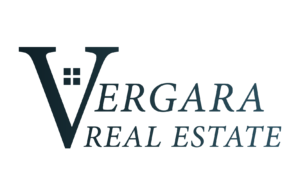Why You Should Buy A Home When Interest Rates Are High
Over the last year, inflation has been on the rise and interest rates have gone up right alongside it. For many prospective home buyers, higher interest rates that lead to higher monthly mortgage payments can feel incredibly discouraging, impacting affordability significantly.
Despite these higher mortgage rates, there are several reasons why buying a home right now may still be very much worthwhile, not the least of which is a sharp decline in competition among buyers. The benefits of buying a home when mortgage rates are high are certainly worth considering.
Rates Are Temporary
Taking out a mortgage may initially seem like a set-in-stone thirty-year commitment, but the truth is that it’s hardly the case. When you purchase your home, think about interest rates as temporary. While you may buy your home for a higher interest rate, you will be able to refinance once rates fall back down, and you’ll be able to secure better terms. Understanding that you have the option to refinance down the line allows you to take advantage of the other perks that higher interest rates offer to prospective homebuyers.
Broader Selection of Homes For Sale
As mortgage rates continue to rise and homebuyers who cannot afford higher monthly payments pump the brakes on their search, more homes are coming on the market. When you take these two trends into consideration, the end result is much broader selection of homes for sale. Ultimately, higher interest rates give prospective homebuyers more choices. Higher rates also mean that homes are staying on the market for longer than in previous years, giving buyers the opportunity to negotiate price and reducing the level of competition for any one home.
Inflation Isn’t Always Bad
While inflation is widely regarded as negative due to its destabilizing effects on the economy, it’s important to bear in mind that inflation comes with a silver lining. As the value of the dollar declines during a period of inflation, so does the value of debt. Therefore, it is possible for inflation to make owning a home and paying a mortgage more affordable for some people than paying rent. Every year, landlords raise rent prices to account for inflation, meaning that no matter what is happening in the rest of the market, rent will always continue to go up.
Conversely, when you have fixed debt by way of a mortgage, you’ll pay the same price for thirty (or fewer) years no matter how much the state of the economy fluctuates. Lenders cannot make adjustments to your mortgage as interest rates or inflation changes.

Home Prices Decrease
With higher interest rates, many prospective home buyers are priced out of purchasing homes they once could have afforded. The result is less competition for homes, and when the supply outpaces the demand, home prices are sure to fall. The longer a home sits on the market, the less leverage the seller has to command a higher price. Over time, you will likely start to see prices decrease all around as sellers compensate for higher rates with price reductions to close the sale.
Reduced Buyer Risk
When home buyers are rushing to close the sale to beat out competition, they often make the risky decision to waive offer contingencies. Sellers are likely to accept an offer with less contingencies because not only does it reduce the likelihood of the buyer stopping the deal as a result of an observed issue, but it also speeds up the timeline of the sale.
Contingencies that tend to get waived include the inspection and appraisal, both of which are key to a sound purchase. When buyers waive these critical contingencies, they assume quite a bit of risk. When inspections are waived, buyers remain unaware of any potential issues with the home.
Why Now Is The Time to Buy
Taking all of these factors into account, it’s plain to see that for some prospective homebuyers, the benefits of seizing the moment outweigh the downsides of higher interest rates. The decline in bidding wars, increased selection of homes, and the ability to refinance in years to come make current market conditions quite favorable for getting a foot in the door of the real estate market.
Ready to seize the opportunity in today’s real estate market? Don’t wait any longer! Higher interest rates can offer unique advantages for savvy homebuyers. If you’re considering making a move, now is the perfect time to explore your options and start your journey towards homeownership. Take the first step towards your dream home today – contact us to discuss your homebuying goals and discover how we can help you navigate this market with confidence. Don’t miss out on the benefits of higher interest rates, get in touch now and secure your future in the real estate market! CLICK HERE












